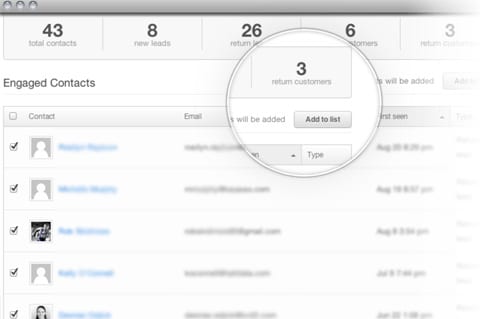 Years ago, businesses faced a major learning curve when they started using computers. Today, however, we all know how browsers, word processors and spreadsheets.
Years ago, businesses faced a major learning curve when they started using computers. Today, however, we all know how browsers, word processors and spreadsheets.
And instead of storing customer data in file cabinets or Rolodexes, we now store this information digitally. More specifically, we use a CRM.
A Customer Relationship Management tool (CRM) is a term describing practices, strategies, and technologies that businesses use to manage customers and analyze data.
CRMs allow an entire company access to relevant customer information, such as their lead score, prior interactions, and even their level of engagement with your products. They’re incredibly useful, although they can be a bit confusing at first.
At HeadsUp, we use HubSpot’s free CRM software, along with their marketing automation and analytics software. Here’s why.
1. Ease of Transition
No one wants to waste time transferring contacts from one place to another. Not only is it tedious, but it also takes valuable time away from production tasks such as building your client base.
Fortunately, the HubSpot CRM can connect, and seamlessly transfer data from your CRM into theirs with minimum hassle. It took roughly 15 minutes to set ours up.
2. Ease of Use
Many CRMs fall short in their ability to integrate with other sales platforms, forcing you to switch back and forth between different software constantly. And all that switching between software increases the risk of inputting incorrect data or failing to input information altogether.
Having all your inbound marketing tools in the same place or at the very least integrated with each other helps to streamline the entire marketing and sales process.
3. It’s Built for (Sales) People
HubSpot designed its CRM around the sales process. Setting tasks, logging emails, and scheduling reminders are incredibly easy and all in one place. Which means sales can spend more time closing deals.
The CRM focuses your attention on the metrics that matter the most. The software has been neatly built to help sales and marketing professionals better understand ROI of each marketing channel, lead source and campaign.
4. Manage Customers Easily Without Excel
Even with all the programs available, Excel is still the reigning king of data manipulation. Yet using Excel to manage customer information is not the best recipe for marketing and sales success.
Fortunately, the developers at HubSpot took this to heart when crafting their CRM. Not only is it possible to sort leads by using several filters, but it’s also actually easier that the same process is in Excel.
The right CRM can turn the chaos of everyday business interactions into an organized database. And while that may sound complicated, it’s not much more complex than a standard email or contacts application. These are just a handful of reasons we’ve determined HubSpot’s CRM as the best CRM available for our business.

